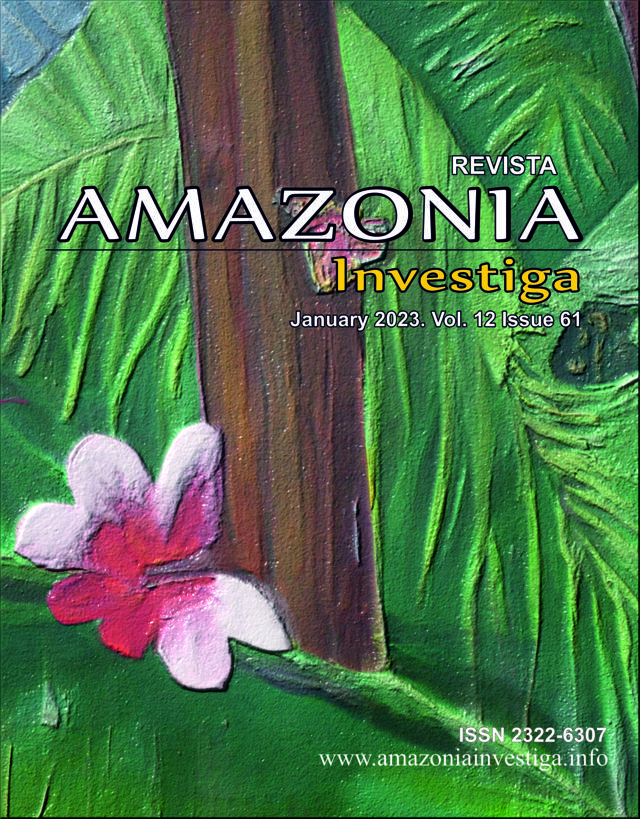The peculiarities of «welcoming the guests – ?? » in Kazakh and Chinese linguoculture
Publicado 2023-02-28
Palabras clave
- national code, linguacultural, custom, greeting, etiquette, communication, mentality, phenomenon.
Cómo citar
Resumen
Deep ties between China and Kazakhstan date back to ancient times. Starting from the ancient period of the Huns, Yuxin and the era of the independent Kazakh Khanate, under Abylai Khan, relations between the Kazakhs and the Chinese took place within the framework of political and diplomatic relations. The researchers’ works are limited to considering the differences and peculiarities between the Kazakh and Chinese languages, omitting the cultural spectrum of bilateral exchanges. This article describes the linguistic and cultural features of the concept of «welcoming the guests - ?? / hàokè» in the Kazakh and Chinese languages. The norms of language etiquette based on respect and honor are used in the expression of customs and traditions. In addition to mastering a foreign language, knowledge of intercultural communication has a special place in the communication with representatives of various countries. Any nation has its own history of development, mentality, way of life and customs. Proper application of the rules and laws of language etiquette leads to a favorable and optimal outcome of communication between the interlocutors. The etiquette of «welcoming the guests – ?? / hàokè» in the Kazakh and Chinese languages refers to a set of etiquette based on ancient customs and traditions.
Descargas
Citas
Bikmullina, E. R., & Zamaletdinov, R. R. (2020). Linguocultural analysis of the most common greetings in the Russian, Tatar and Chinese languages. International Journal of Criminology and Sociology, 9, 844-849. https://doi.org/10.6000/1929-4409.2020.09.83
Bondarenko, A., Semashko, T., & Moroz, O. (2021). Axiological density of the linguocultural concept. Linguistics and Culture Review, 5(1), 272-287. https://doi.org/10.21744/lingcure.v5n1.1519
Du, H., Chen, A., Chi, P., & King, R. B. (2019). Person-culture fit boosts national pride: A cross-cultural study among 78 societies. Journal of research in personality, 81, 108-117. https://doi.org/10.1016/j.jrp.2019.05.008
Erton, ?. (2020). Linguistic and cognitive aspects of translation and interpretation skills. Journal of Language and Linguistic Studies, 16(4), 1910-1920. https://doi.org/10.17263/jlls.851022
Eskazinova, Z. A., & Smagulova, G. N. (2020). Ethnolinguistic significance of comparing human character with nature in Kazakh and English. Bulletin of the Innovative Eurasian University, 4, 18-23. https://doi.org/10.37788/2020-4/18-22
Ge, Y. (2022). The linguocultural concept based on word frequency: correlation, differentiation, and cross-cultural comparison. Interdisciplinary Science Reviews, 47(1), 3-17. https://doi.org/10.1080/03080188.2021.1946743
Ibraimova, A. (2022). Linguistic features of "greeting" etiquette in Kazakh and Chinese languages. Journal of Oriental Studies, 100(1), 14-21. https://doi.org/10.26577/JOS.2022.v100.i1.02
Jalilbayli, O. B. (2022). Forecasting the prospects for innovative changes in the development of future linguistic education for the XXI century: the choice of optimal strategies. Futurity Education, 2(4), 36–43. https://doi.org/10.57125/FED.2022.25.12.0.4
Kadyr M. A. (2005). Kazakh and Guest. Selected. Two-volume works. 1st Volume. Poems and Epos. Almaty: Jahushi, 11, 201.
Kizi, S. B. Y. (2022). Linguo-cultural characteristics of speech etiquette occurring in discourse. Current Research Journal of Philological Sciences, 3(11), 59-63.
Konyratbayeva, Z., Satemirova, D., Abdualyuly, B., Kenzhalin, K., & Akazhanova, A. (2021). Eastern and Western Linguocultural Map: Similarities and? Peculiarities (Based on Linguocultural Research)?. International Journal of Society, Culture & Language, 9(2), 85-97. http://www.ijscl.net/article_246570_4aee18bc09a9c4364df5dc066e1a2e68.pdf
Kurkina, A. S., & Sternin, I. A. (2018). Communicative behavior and communicative personality of language speaker. Scientific Journal Modern Linguistic and Methodical-and-Didactic Researches, 3, 86-101.
Leyla, K., & Diyora, S. (2021). Comparative Analysis of the usage of Concept" Hospitality" in Materials of English, Russian and Uzbek Languages. American Journal of Social and Humanitarian Research, 2(9), 20-24. https://www.globalresearchnetwork.us/index.php/ajshr/article/view/600/495
Mamasheva, O., Madmarova, G., Abytova, G., Berdibekova, B., Bolotakunova, G., Ormokeeva, R., ... & Abdullaeva, Z. (2021). Reflection of Nations Mentality in the Kyrgyz, Russian and English Language Phraseological Units. Open Journal of Modern Linguistics, 11(01), 24. https://doi.org/10.4236/ojml.2021.111002
Meirmanova, G. A., Khatran, D., & Kabdoldina, G. A. (2020). The Transformation of the Hospitality Etiquette of the Kazakhs. Ethnographic Review, 2, 153-167. https://doi.org/10.31857/s086954150009609-9
Morphy, H. (2020). Becoming art: exploring cross-cultural categories. Routledge. https://doi.org/10.4324/9781003135579
Pae, H. K., Sun, J., Luo, X., Ai, H., Ma, F., Yang, N., & Xia, D. (2021). Linguocultural cognition manifested in spoken narratives in L2 English by native Chinese and Korean speakers. Journal of Cultural Cognitive Science, 5(3), 345-365. https://link.springer.com/article/10.1007/s41809-021-00088-3
Sakaeva, L. (2018). Methodological bases of conceptology: features and structure of the linguo-cultural concept. Revista san gregorio, 23, 100-107. https://dialnet.unirioja.es/servlet/articulo?codigo=6587469
Usmanova, S. (2022). The importance of nonverbal means in intercultural communication. ACADEMICIA: An International Multidisciplinary Research Journal, 12(5), 1244-1252. https://doi.org/10.5958/2249-7137.2022.00597.3
Xafizovna, R. N. (2021). The category of politeness in different linguocultural traditions. ACADEMICIA: an International Multidisciplinary Research Journal, 11(2), 1667-1675. https://doi.org/10.5958/2249-7137.2021.00566.8
Zogg, B. (2019). Kazakhstan: A centrepiece in China’s belt and road. CSS Analyses in Security Policy, 249. https://doi.org/10.3929/ethz-b-000362184
Zohirjonovna, G. Z. (2022). Methodology and types of linguocultural analysis. ACADEMICIA: An International Multidisciplinary Research Journal, 12(11), 152-155. https://doi.org/10.5958/2249-7137.2022.00863.1











